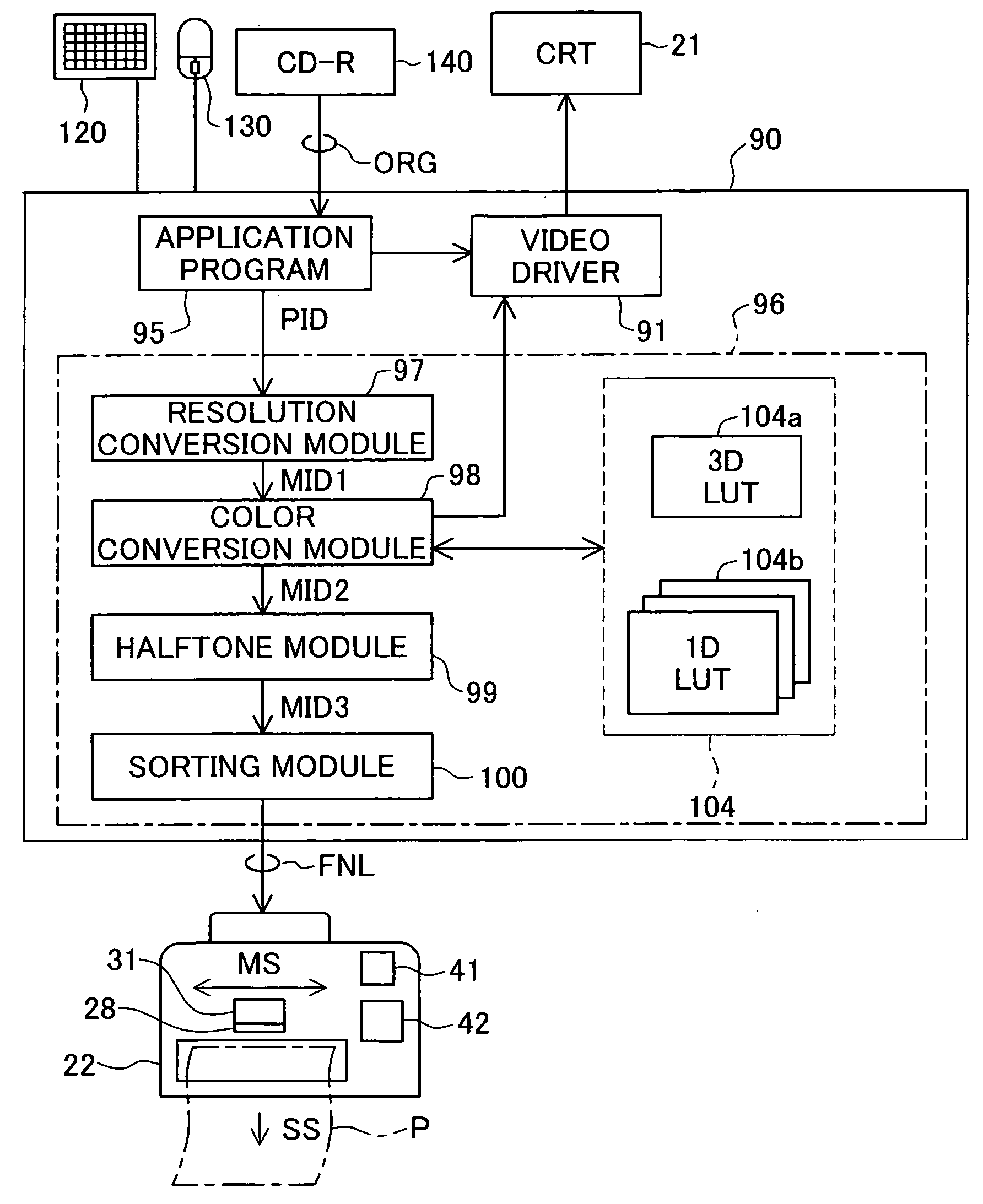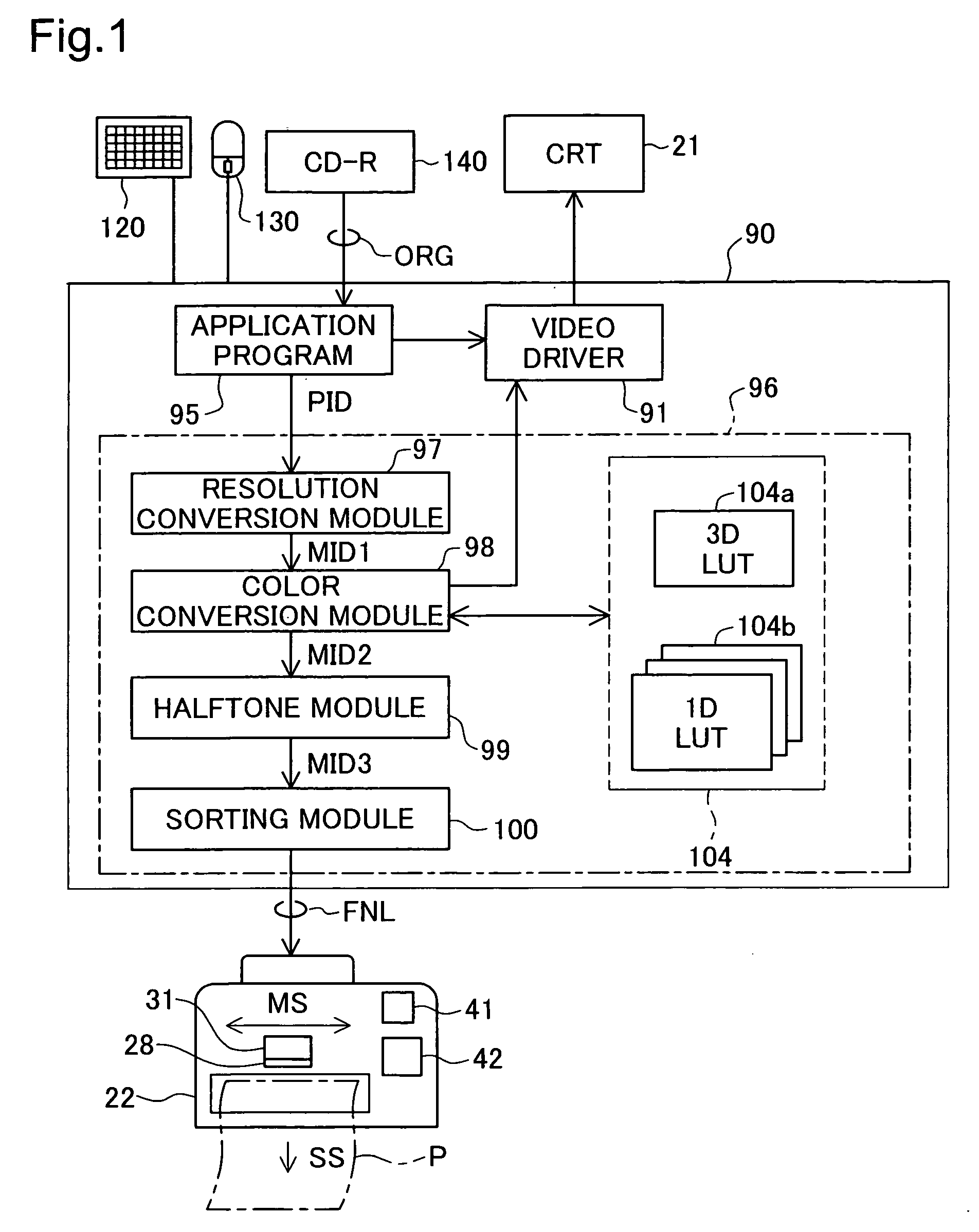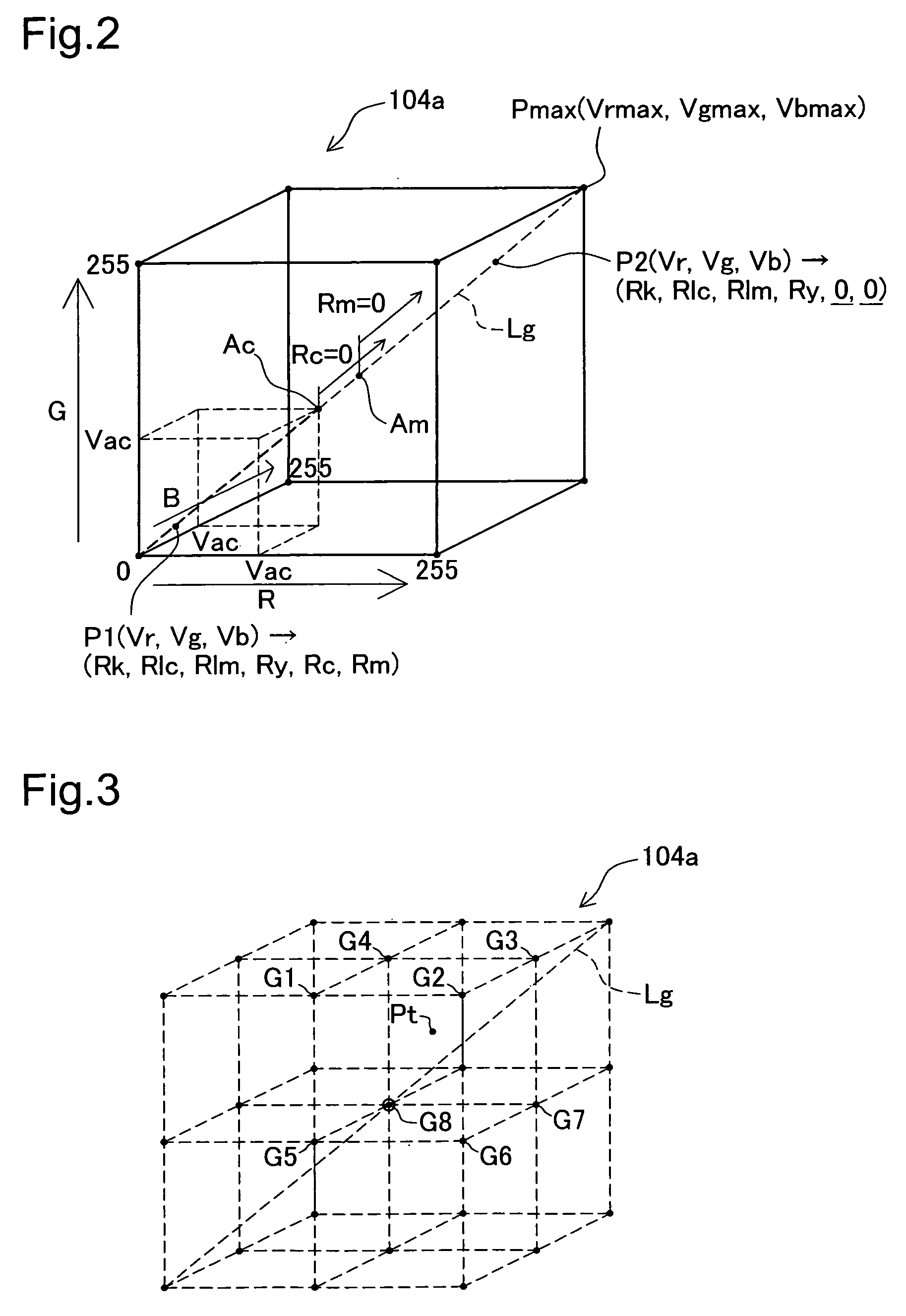Creation of lookup table for printing with contrasting density ink
a technology of contrasting density and lookup table, which is applied in the field of printing with two kinds can solve the problems of large amount of chromatic color ink consumption and tendency of printed images to have visible graininess, and achieve the effects of preserving the quality of printed results, reducing ink consumption, and reducing lightness
- Summary
- Abstract
- Description
- Claims
- Application Information
AI Technical Summary
Benefits of technology
Problems solved by technology
Method used
Image
Examples
embodiment 2
B.
[0098] The description of Embodiment 1 focused mainly on the three-dimensional lookup table 104a. However, a lookup table having a recording rate of 0 of dark color ink for the area of gray lighter than the reference points Ac, Am can be realized as a one-dimensional lookup table 104b for use in monochrome printing.
[0099]FIG. 11 shows the one-dimensional lookup table 104b (see FIG. 1). The one-dimensional lookup table 104b is referred to in printing of monochrome images in which pixel color is represented by lightness information only. The horizontal axis in the drawing is the input tone value Vm representing gray density in monochrome image data. In monochrome image data the input tone value Vm can assume values of 0 to 255. The color represented by the input tone value Vm=0 is white. The color represented by the input tone value Vm=255 is black.
[0100] In FIG. 11, Vmac is the tone value that represents gray of lightness equal to the color lightness Lac represented by the refere...
PUM
 Login to View More
Login to View More Abstract
Description
Claims
Application Information
 Login to View More
Login to View More - R&D
- Intellectual Property
- Life Sciences
- Materials
- Tech Scout
- Unparalleled Data Quality
- Higher Quality Content
- 60% Fewer Hallucinations
Browse by: Latest US Patents, China's latest patents, Technical Efficacy Thesaurus, Application Domain, Technology Topic, Popular Technical Reports.
© 2025 PatSnap. All rights reserved.Legal|Privacy policy|Modern Slavery Act Transparency Statement|Sitemap|About US| Contact US: help@patsnap.com



